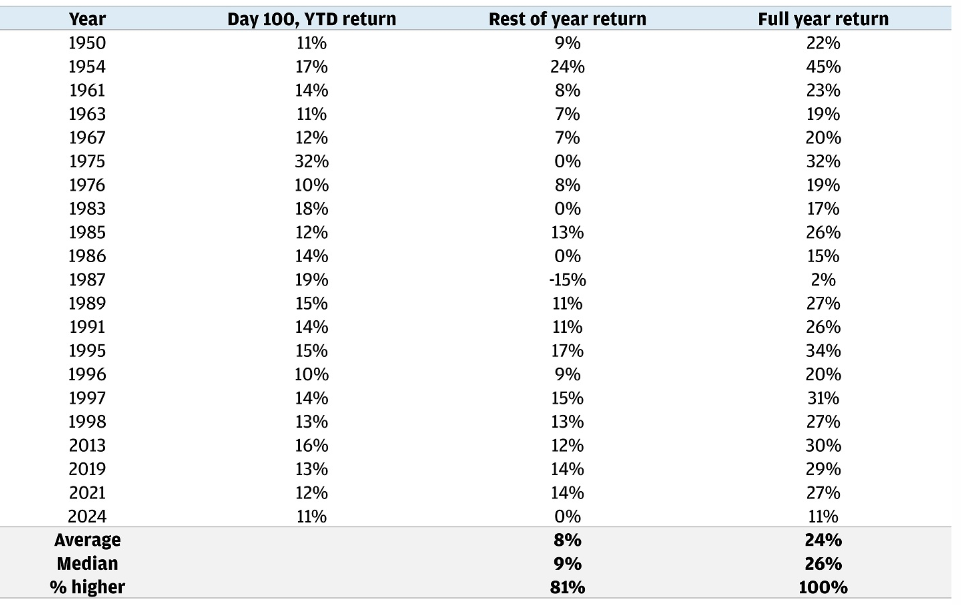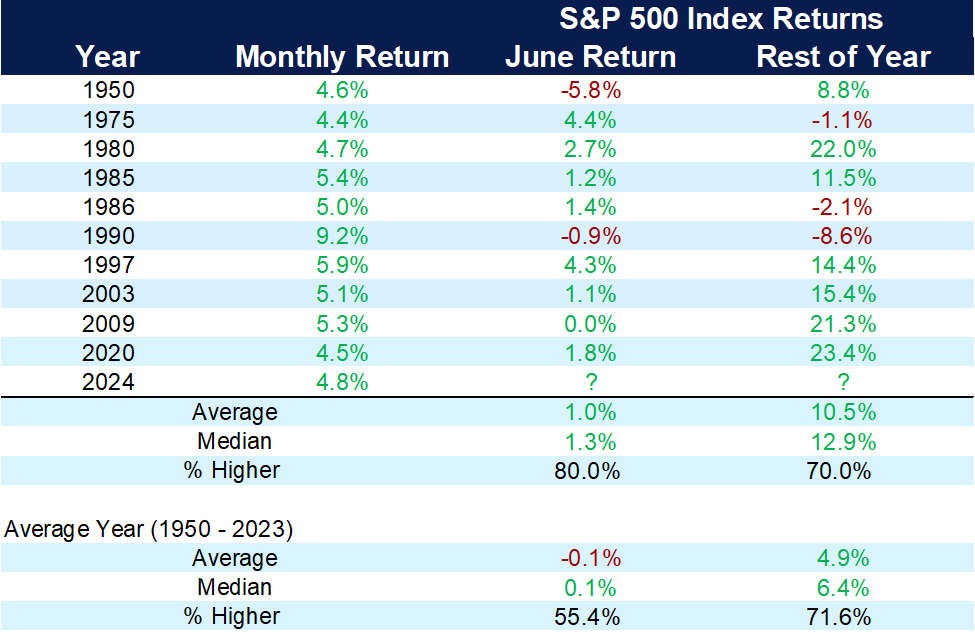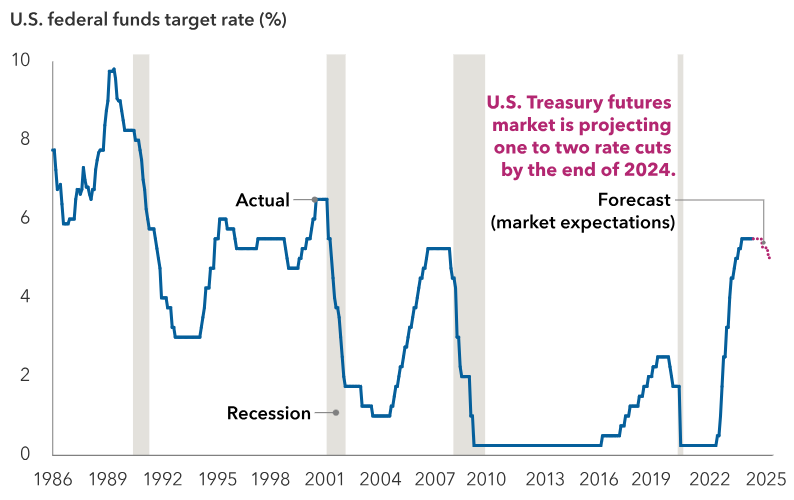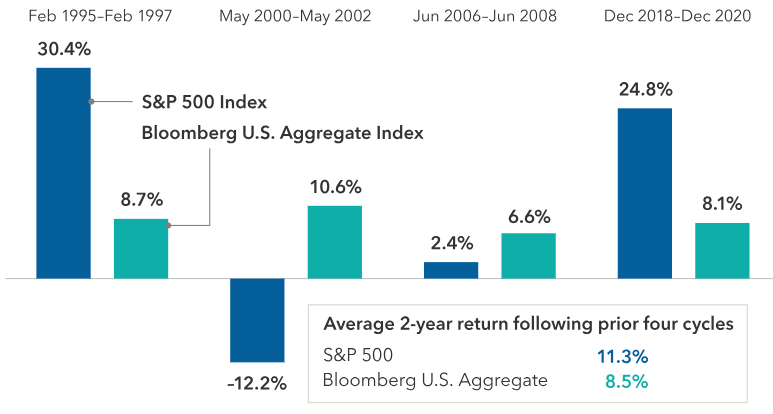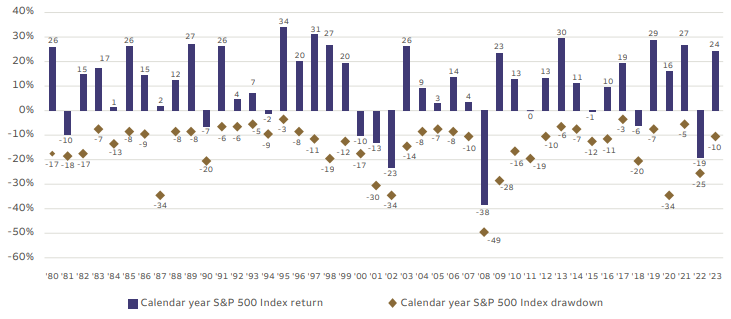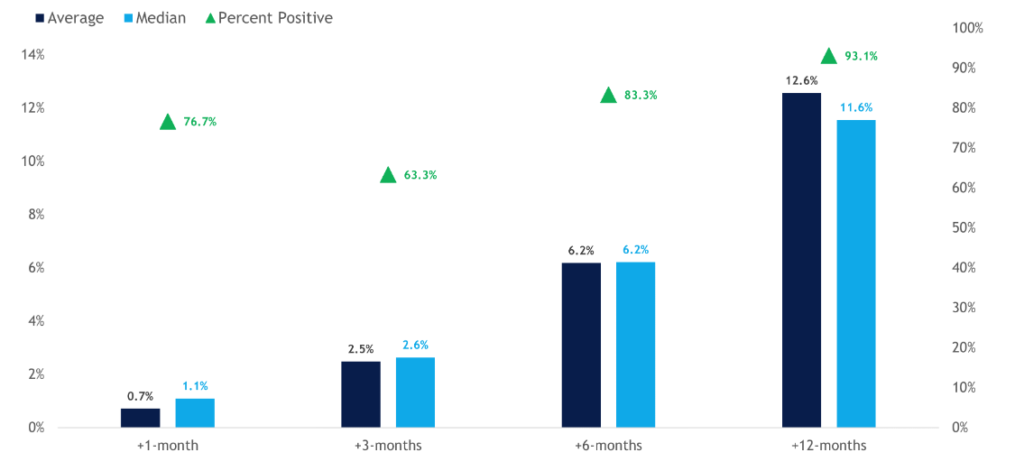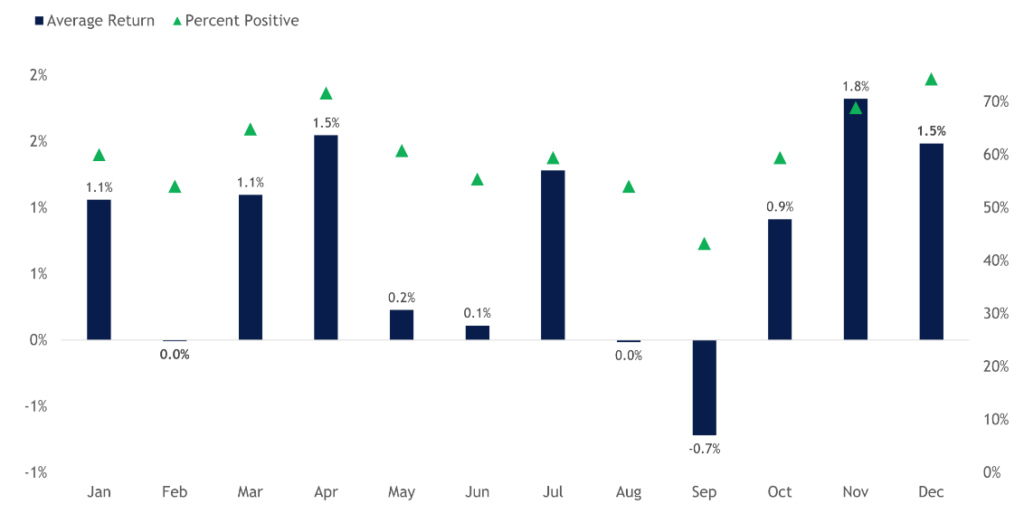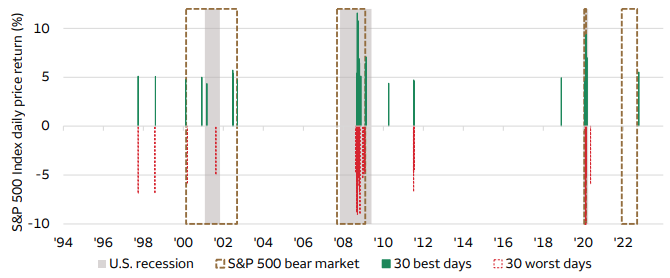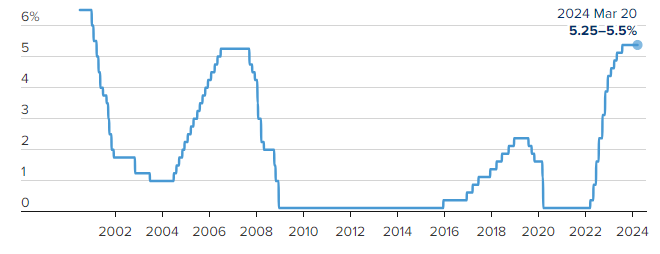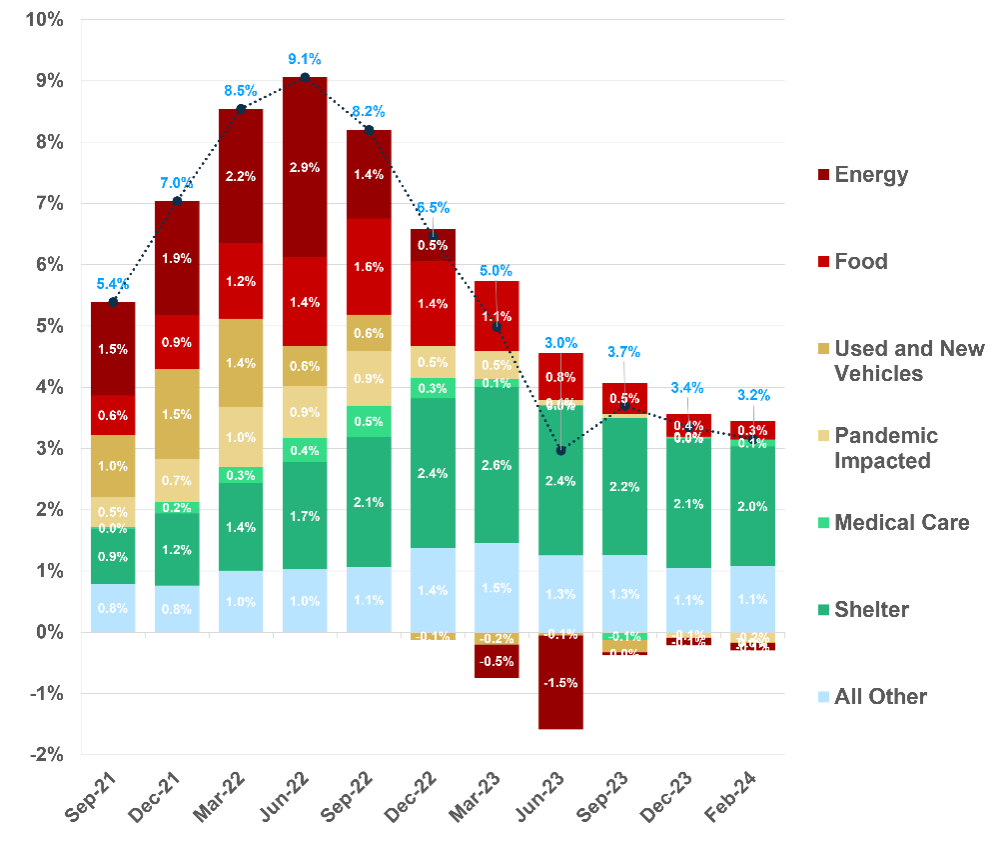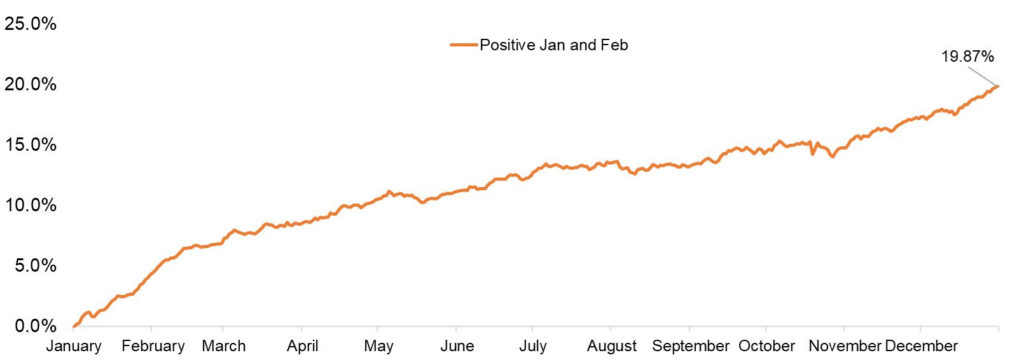Investors woke up Monday morning to a sudden global panic, cratering the value of stocks, currencies and even cryptocurrencies. The Dow fell over 1,200 points at the open, the S&P 500 dropped over 200 points, and the NASDAQ was down over 1,000 points, more than a 6% pullback. Japan’s Nikkei Index fell more than 12%, its largest one-day drop in almost 40 years, following an interest rate hike by the Bank of Japan last week.
The NASDAQ is officially in correction mode, down more than 10% from its all-time high. The S&P 500 is down 9% from its recent high, set three weeks ago, and it has fallen the last three weeks. This is only the second pullback of 5% or more this year; most years see more than three 5% pullbacks on average.
As great as 2023 was, investors should remember we saw a 10% correction from late July until October. On average over the last 70+ years, the market has seen a 10% correction at least once per calendar year — and a 15% correction every 18 months.
Volatility Is the Toll We Pay To Invest
S&P 500 per year (1950-2022)

It is important to look at what caused the sudden market volatility and the recent pullback in the stock market:
1. Last week’s jobs report caused concerns of a recession. A few data points last week showed signs of a weakening economy: jobless claims at their highest level in a year, weak manufacturing data, Friday’s non-farm payroll number missing by a large margin and the unemployment rate at 4.3%, its highest level since 2022. While the labor market has cooled, the economy remains on good footing, as preliminary GDP numbers were strong.
2. The Fed did not reduce interest rates and will wait until September. We have been seeing improving data showing inflation is under control. Higher rates have impacted the housing market and small business investment. The Fed has two mandates: keep prices under control and maintain full employment. Ten-year Treasury yields have fallen below 4%, and for the first time in more than two years, the yield curve is no longer inverted. The bond market is signaling that it is time for the Fed to begin cutting interest rates — and maybe that it has waited too long.
3. Carry trade may be ending. The Bank of Japan raised interest rates for the first time in 17 years, to .25% from 0%. It also acknowledged that more rate hikes may be coming this year. Japanese investors have been borrowing money at zero rates and investing those monies into higher-yielding or riskier assets both domestically and overseas. This is called a “carry trade.” The rate hike in Japan was a taken as a signal that the carry trade strategy is approaching its end, and investors are now reversing their positions. As they reverse their trades, they are selling those riskier assets, such as U.S. stocks, to pay off the borrowed money in Japan. It is unknown how long the unwinding of the carry trade may last and how much more potential downside there may be.
4. Warren Buffett disclosed that he sold half of his long-term position in AAPL. While we don’t know the entire reason Buffett unloaded half of his Apple stock, the stock remains his largest holding at over $84 billion. This could be positioning for a higher capital gains rate in the future, or it could be market valuation — or his opinion of the Apple stock valuation. Either way, the disclosure over the weekend on top of weaker jobs data and what was happening in Japan caused additional stress to the trading of the Magnificent Seven stocks.
5. The hype over AI is showing cracks. The S&P 500 and NASDAQ are both up more than 9% on the year, even after the sharp sell-off. Stocks have benefited from strong corporate earnings and continued excitement over artificial intelligence’s growth and potential. Nvidia has been the clear leader for AI chips. Rumors began circulating Monday that it is delaying its next-generation AI chips by at least three months, which could alter its earnings as well as other mega-cap tech stocks such as Microsoft, Google and Meta.
It is important to remember that market pullbacks are normal and that the market does not go up in a straight line.
The average market pullback in a calendar year going back to 1980 is more than 14% in any one year. But what you notice in the chart below is that there are many more positive years than negative years in the S&P 500, and only in one instance — the Great Financial Crisis — have we seen multiple down years in a row.
We repeat the drumbeat that what matters is time in the market and not time out of the market. While we have seen increased market volatility, this is normal and part of long-term investing in the stock market.
Putting 2024 in Perspective
S&P 500 Index max pullback per calendar year

The CD Wealth Formula
We help our clients reach and maintain financial stability by following a specific plan, catered to each client.
Our focus remains on long-term investing with a strategic allocation while maintaining a tactical approach. Our decisions to make changes are calculated and well thought out, looking at where we see the economy is heading. We are not guessing or market timing. We are anticipating and moving to those areas of strength in the economy — and in the stock market.
We will continue to focus on the fact that what really matters right now is time in the market, not out of the market. That means staying the course and continuing to invest, even when the markets dip, to take advantage of potential market upturns. We continue to adhere to the tried-and-true disciplines of diversification, periodic rebalancing and looking forward, while not making investment decisions based on where we have been.
It is important to focus on the long-term goal, not on one specific data point or indicator. Long-term fundamentals are what matter. In markets and moments like these, it is essential to stick to the financial plan. Investing is about following a disciplined process over time.
Sources: AAM, Carson, CNBC, Fortune, Forbes, Washington Post
This material contains an assessment of the market and economic environment at a specific point in time and is not intended to be a forecast of future events, or a guarantee of future results. Forward-looking statements are subject to certain risks and uncertainties. Actual results, performance, or achievements may differ materially from those expressed or implied. Information is based on data gathered from what we believe are reliable sources.
Using diversification as part of your investment strategy neither assures nor guarantees better performance and cannot protect against loss of principal due to changing market conditions.
Past performance is not a guarantee of future results.
The opinions expressed in this commentary are those of the author and may not necessarily reflect those held by Kestra Investment Services, LLC or Kestra Advisory Services, LLC. This is for general information only and is not intended to provide specific investment advice or recommendations for any individual. It is suggested that you consult your financial professional, attorney, or tax advisor regarding your individual situation.
Securities offered through Kestra Investment Services, LLC (Kestra IS), member FINRA/SIPC. Investment Advisory Services offered through Kestra Advisory Services, LLC (Kestra AS) an affiliate of Kestra IS. CD Wealth Management and Bluespring Wealth Partners LLC* are affiliates of Kestra IS and Kestra AS.
Investor Disclosures: https://bit.ly/KF-Disclosures
*Bluespring Wealth Partners, LLC acquires and supports high quality investment adviser and wealth management companies throughout the United States.














